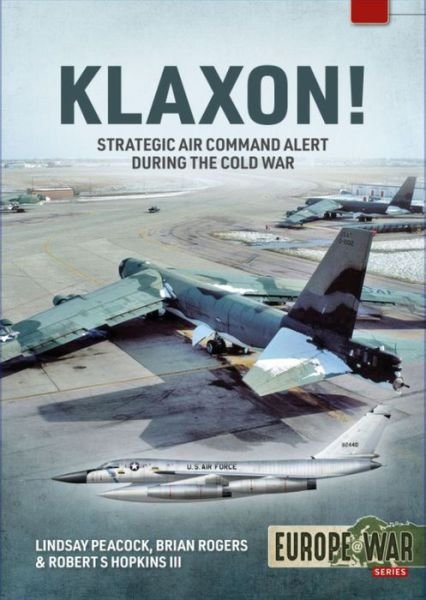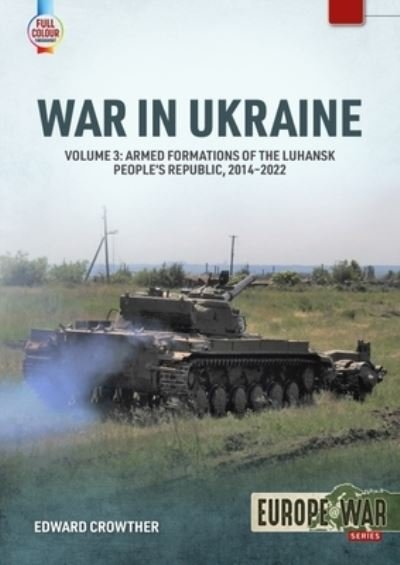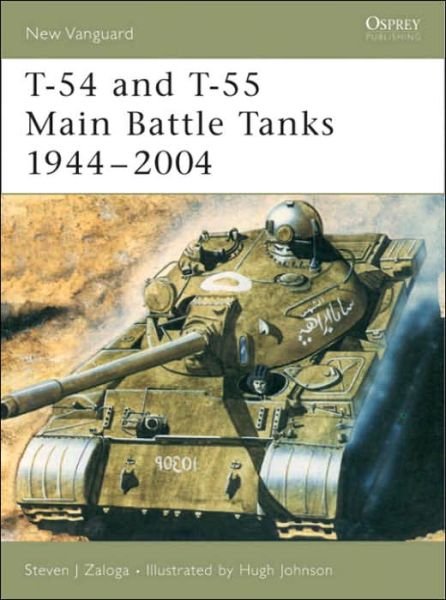
Tell your friends about this item:
Defcon-2: Standing on the Brink of Nuclear War During the Cuban Missile Crisis
Norman Polmar
Defcon-2: Standing on the Brink of Nuclear War During the Cuban Missile Crisis
Norman Polmar
Commendation Quotes: ""DEFCON-2" is the best single volume on the Cuban Missile Crisis published, and is an important contribution to the history of the cold war. Beyond the military and political facts of the crisis, Polmar and Gresham sketch the personalities that created and coped with the crisis. They also show us how close we came to the edge without becoming sensationalistic."--Larry Bond, best-selling author of "Dangerous Ground"""DEFCON-2" should become a standard reference work on the missile crisis."--Proceedings, the professional magazine of the US NavyReview Quotes: Veteran military analysts Polmar ("Spyplane," etc.) and Gresham ("Seapower," etc.) distinguish their examination of the 1962 Cuban missile crisis from scores of other books on the subject by detailing how military maneuvers undertaken months in advance led to the tense showdown. The book's title, which is also the name of a Discovery Channel documentary based on this volume, comes from the acronym for Defense Condition Two, the Unites States' highest state of military alert short of war. The only time America went to DEFCON-2 during the Cold War was on October 22, 1962, the day that President Kennedy publicly denounced the Soviet Union's construction of missile launching sites in Cuba. The authors, who interviewed Russian, American and Cuban military men who had leading roles in the showdown, provide new logistical information on how the Soviet Union moved a small nuclear arsenal to Cuba. They deftly meld accounts of what happened in the sea and air with descriptions of the political aJacket Description/Back: The closest we've ever come to the end of the world "DEFCON-2 is the best single volume on the Cuban Missile Crisis published and is an important contribution to the history of the Cold War. Beyond the military and political facts of the crisis, Polmar and Gresham sketch the personalities that created and coped with the crisis. They also show us how close we came to the edge without becoming sensationalistic." --Larry Bond, bestselling author of Dangerous Ground Spy-satellite and aerial-reconnaissance photos reveal that one of the United States's bitterest enemies may be acquiring weapons of mass destruction and the means to use them against the American homeland. Administration officials refuse to accept intelligence professionals' interpretation of these images and order an end to spy missions over the offending nation. More than a month later, after vicious infighting, the president orders the spy missions to resume. The new photos reveal an array of ballistic missiles, capable of carrying nuclear warheads and striking deep within U. S. territory. It appears that the missiles will be fully operational within one week. This is not a plot setup for a suspense novel; it is the true story of the most terrifying moment in the 45-year Cold War between the United States and the Soviet Union: the Cuban Missile Crisis. DEFCON-2 tells this tale as it has never been told before--from both sides, with the help of hundreds of recently declassified U. S. and Soviet documents, as well as interviews with numerous former spies, military figures, and government officials who speak out here for the first time. Review Quotes: "DEFCON-2 provides significantly more detail than any existing books on the subject. It's a valuable addition to the library of any intelligence professional." ("Naval Intelligence Professional Quarterly") Marc Notes: Includes bibliographical references (p. 359-369) and index.; Bibl. ref. & index. Review Quotes: Veteran military analysts Polmar ("Spyplane", etc.) and Gresham ("Seapower", etc.) distinguish their examination of the 1962 Cuban missile crisis from scores of other books on the subject by detailing how military maneuvers undertaken months in advance led to the tense showdown. The book's title, which is also the name of a Discovery Channel documentary based on this volume, comes from the acronym for Defense Condition Two, the Unites States' highest state of military alert short of war. The only time America went to DEFCON-2 during the Cold War was on October 22, 1962, the day that President Kennedy publicly denounced the Soviet Union's construction of missile launching sites in Cuba. The authors, who interviewed Russian, American and Cuban military men who had leading roles in the showdown, provide new logistical information on how the Soviet Union moved a small nuclear arsenal to Cuba. They deftly meld accounts of what happened in the sea and air with descriptions of the political and intelligence operations in Washington and Moscow. Thoroughly researched and suspenseful, their book is an excellent choice for fans of Cold War history. "(Feb.)" ("Publishers Weekly", January 9, 2006)""DEFCON-2" provides significantly more detail than any existing books on the subject. It's a valuable addition to the library of any intelligence professional." ("Naval Intelligence Professional Quarterly")"One of the most striking accounts of the Cold War." ("Sea Power" magazine) Jacket Description/Flap: Anyone who lived through it remembers the terror, the uncertainty, and the dread that in an instant the world as we knew it might cease to exist. For the thirteen days of the Cuban Missile Crisis in October 1962, the future seemed to hang by a thread; nuclear holocaust not only seemed possible, but likely. U. S. military forces around the world were placed on high alert, and American nuclear bombers and land-based missiles were moved to DEFCON-2: the highest state of readiness short of war. The military forces of the Soviet Union were moved to a similar level of readiness, and both sides were ready for World War III. DEFCON-2 presents the most complete, lively, and shocking account of the Cuban Missile Crisis and the events leading up to it that has ever been published. Drawing from hundreds of newly declassified American and Soviet documents, as well as interviews with numerous individuals who were directly involved in the political, military, and diplomatic aspects of the crisis, this chilling narrative is the first to fully reveal how close the world came to Armageddon in 1962. Authors Norman Polmar and John Gresham provide a detailed description of the run-up to the crisis in the summer of 1962. They demonstrate how the Kennedy administration's virulent antipathy to Fidel Castro and tendency toward Cold War gamesmanship fueled Nikita Khrushchev's desire to shield the Castro regime, even as he tried to redress the Soviet inferiority in strategic missiles that could strike the American homeland. Even more unsettling than this face-off between strong and determined world leaders are the startling number of "small" events and details, any one of which might have triggered a worldwide conflagration. As the crisis progressed, a U2 spyplane was lost over the North Pole and eastern Siberia; an exhausted Soviet submarine commander in the Caribbean considered using a torpedo armed with a nuclear warhead if necessary; and urgent communications between the two superpowers depended, in large part, on the reliability of Western Union messenger boys on bicycles!As Tom Clancy remarks in his memorable foreword to this unforgettable tale: "The reality of the confrontation in October 1962 was more bizarre and more frightening than anything I have written." Just how strange things became is revealed in interviews with the U. S. Air Force photo interpreter who first sighted the Soviet ballistic missiles in Cuba, a KGB agent stationed in Washington in 1962, a U. S. Navy officer stationed on the quarantine line during the crisis, and yes, that Soviet submarine commander who, for a few crucial minutes, held the fate of the world in his hands. Tom Clancy said it: truth is stranger and scarier than fiction. And DEFCON-2 is more gripping, more thrilling, and more terrifying than any novel you will ever read. Biographical Note: NORMAN POLMAR is a regular commentator on the Discovery, A&E, and History channels, and the author of more than forty books on naval, aviation, and intelligence subjects. He has served as an advisor or consultant on defense issues to three U. S. senators and two members of the House of Representatives, as well as to several Navy and Defense officials. JOHN D. GRESHAM collaborated with Tom Clancy on his bestselling series of guided tours of military units, such as Submarine and Special Forces. He is also the coauthor of an upcoming book on the Special Forces during the war in Afghanistan. Table of Contents: Foreword by Tom Clancy. Preface. Acknowledgments. Glossary. Technical Notes.1. Most Dangerous Moments.2. Imbalance of Terror.3. The Cuban Decision: Coming to America.4. Cuba: The American View.5. Operation Anadyr.6. Surveillance and Discovery.7. ExComm.8. Consensus and Notification.9. Taking Action.10. Crisis beneath the Waves.11. The View from the Kremlin.12. "Until Hell Freezes Over!."13. Back Channels and Telegrams.14. OPLAN 316: Invasion!15. From SIOP to Dr. Strangelove.16. The Deal: The Turkish Card.17. Withdrawal.18. Legacy: The Anadyr Effect. Appendix A: The Membership of ExComm. Appendix B: U-2 Missions Flown during Operation Anadyr. Appendix C: U. S. Naval Forces in the Caribbean. Appendix D: Soviet Missile Characteristics. Notes. Bibliography. Photo Credits. Index. Review Quotes: * Veteran military analysts Polmar ("Spyplane", etc.) and Gresham ("Seapower", etc.) distinguish their examination of the 1962 Cuban missile crisis from scores of other books on the subject by detailing how military maneuvers undertaken months in advance led to the tense showdown. The book's title, which is also the name of a Discovery Channel documentary based on this volume, comes from the acronym for Defense Condition Two, the Unites States' highest state of military alert short of war. The only time America went to DEFCON-2 during the Cold War was on October 22, 1962, the day that President Kennedy publicly denounced the Soviet Union's construction of missile launching sites in Cuba. The authors, who interviewed Russian, American and Cuban military men who had leading roles in the showdown, provide new logistical information on how the Soviet Union moved a small nuclear arsenal to Cuba. They deftly meld accounts of what happened in the sea and air with descriptions of the political and intelligence operations in Washington and Moscow. Thoroughly researched and suspenseful, their book is an excellent choice for fans of Cold War history. "(Feb.)" ("Publishers Weekly", January 9, 2006)"""DEFCON-2" provides significantly more detail than any existing books on the subject. It's a valuable addition to the library of any intelligence professional."" ("Naval Intelligence Professional Quarterly")""One of the most striking accounts of the Cold War."" ("Sea Power" magazine) Publisher Marketing: A history of the Cuban Missile Crisis, reflecting the hidden stories behind the most perilous moment of the Cold War. Review Citations: Publishers Weekly 01/09/2006 pg. 49 (EAN 9780471670223, Hardcover) Contributor Bio: Polmar, Norman Norman Polmar is an internationally known analyst, consultant, and award-winning author specializing in the naval, aviation, and intelligence areas. He has participated in or directed major studies in these areas for the U. S. Department of Defense and Navy, and served as a consultant to U. S. and foreign commercial firms and government agencies. He has been an advisor or consultant on naval issues to three U. S. Secretaries of the Navy and two Chiefs of Naval Operations, as well as to three U. S. Senators and a Speaker of the House of Representatives. He has 50 published books to his credit, including eight previous editions of Ships and Aircraft of the U. S. Fleet and four editions of Guide to the Soviet Navy. Mr. Polmar is a columnist for Proceedings and Naval History magazines. He is a resident of Alexandria, VA . Contributor Bio: Clancy, Tom Tom Clancy is America s, and the world s, favorite international thriller author. Starting with The Hunt for Red October, all thirteen of his previous books have hit #1 on the New York Times bestseller list. His books, The Hunt for Red October, Patriot Games, Clear and Present Danger, and The Sum of All Fears have been made into major motion pictures. He lives in Maryland where he is a co-owner of the Baltimore Orioles.
| Media | Books Hardcover Book (Book with hard spine and cover) |
| Released | 2006 |
| ISBN13 | 9780471670223 |
| Publishers | Wiley (TP) |
| Genre | Chronological Period > 20th Century - Cultural Region > Caribbean & West Indies |
| Pages | 384 |
| Dimensions | 165 × 242 × 34 mm · 721 g |
More by Norman Polmar
Others have also bought
See all of Norman Polmar ( e.g. Hardcover Book , Paperback Book and CD )




![Cover for Norman Polmar · Aircraft Carriers - Volume 1: A History of Carrier Aviation and its Influence on World Events, Volume I: 1909-1945 (Hardcover Book) [2 Rev edition] (2006)](https://imusic.b-cdn.net/images/item/original/634/9781574886634.jpg?norman-polmar-2006-aircraft-carriers-volume-1-a-history-of-carrier-aviation-and-its-influence-on-world-events-volume-i-1909-1945-hardcover-book&class=scaled&v=1409683515)
![Cover for Norman Polmar · Historic Naval Aircraft: From the Pages of Naval History Magazine - Photographic Histories (Paperback Book) [New edition] (2005)](https://imusic.b-cdn.net/images/item/original/662/9781574887662.jpg?norman-polmar-2005-historic-naval-aircraft-from-the-pages-of-naval-history-magazine-photographic-histories-paperback-book&class=scaled&v=1410070042)











![Cover for Henry Nielsen og Casper Andersen · Minutter i midnat (Bound Book) [1st edition] (2022)](https://imusic.b-cdn.net/images/item/original/657/9788772196657.jpg?henry-nielsen-og-casper-andersen-2022-minutter-i-midnat-bound-book&class=scaled&v=1652359804)




